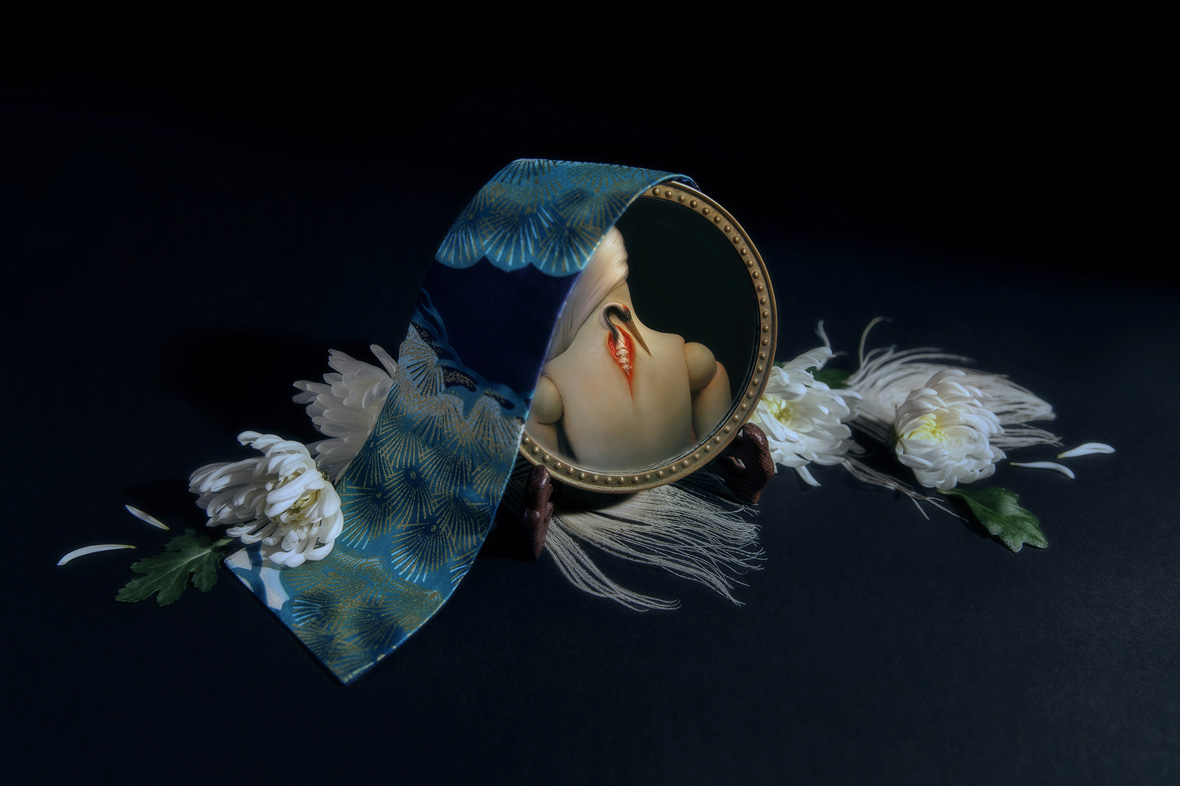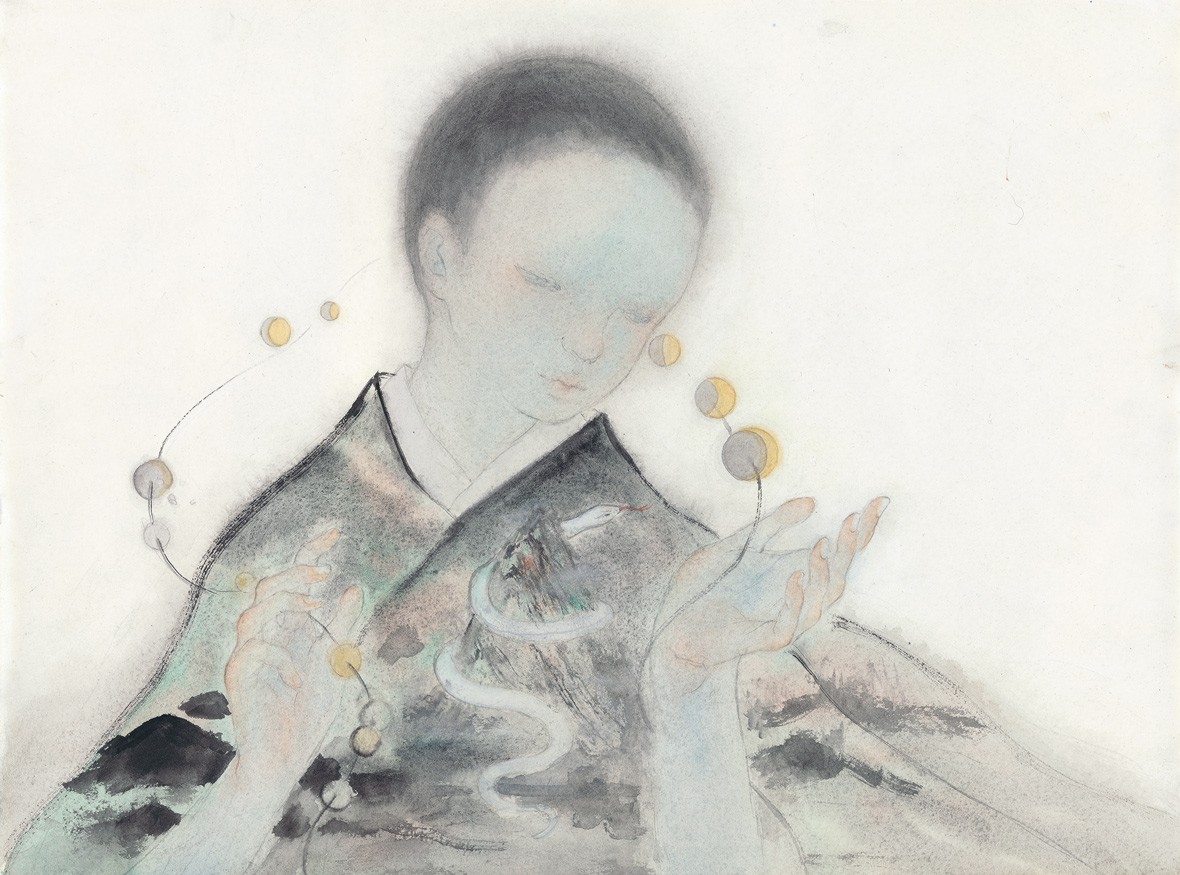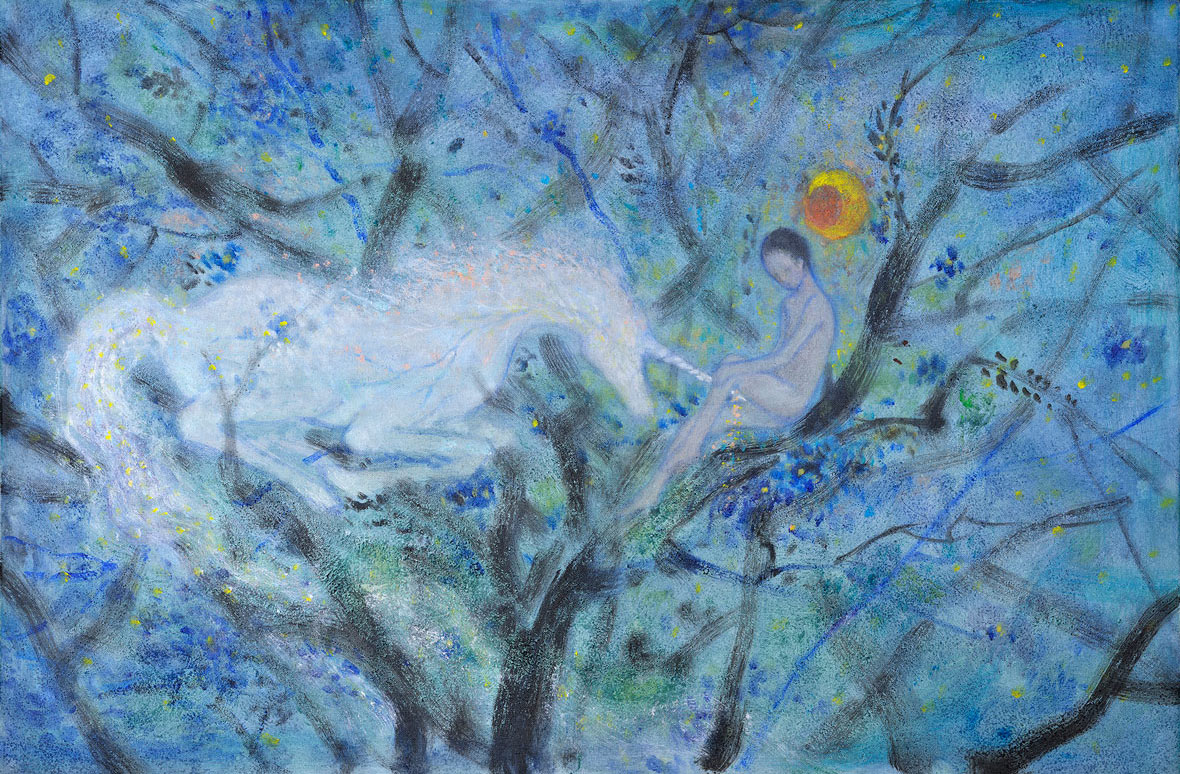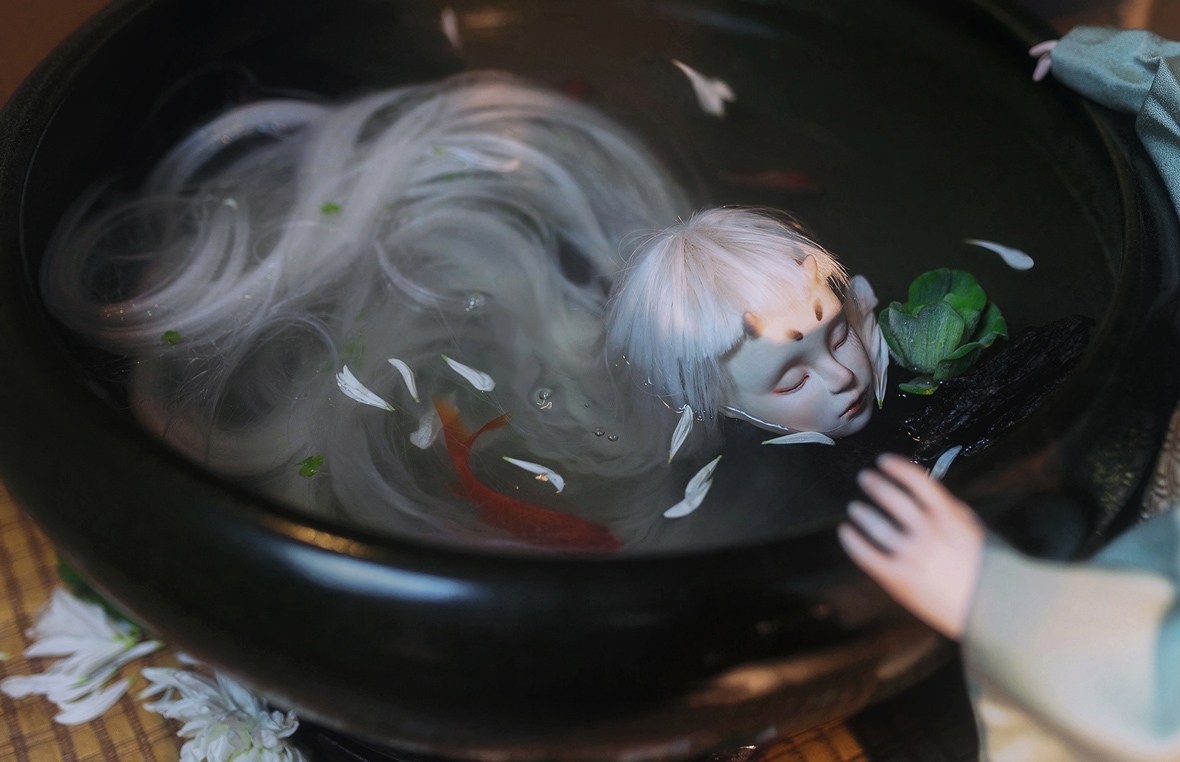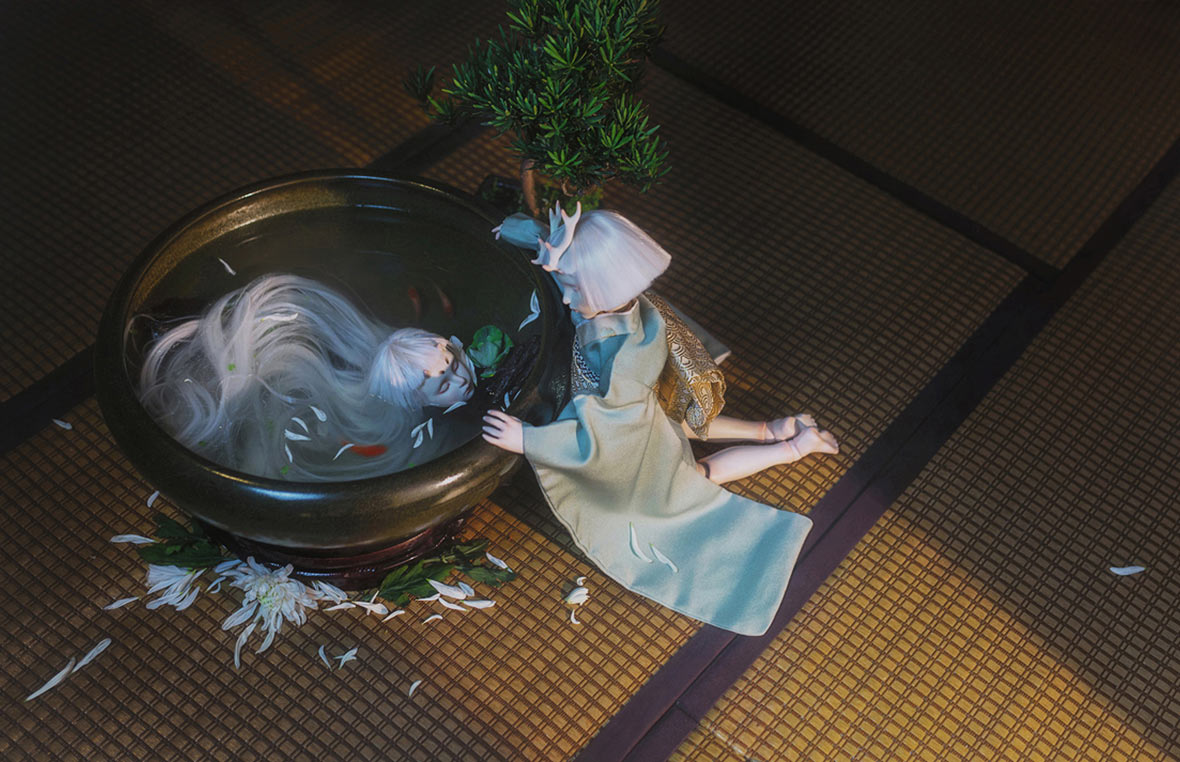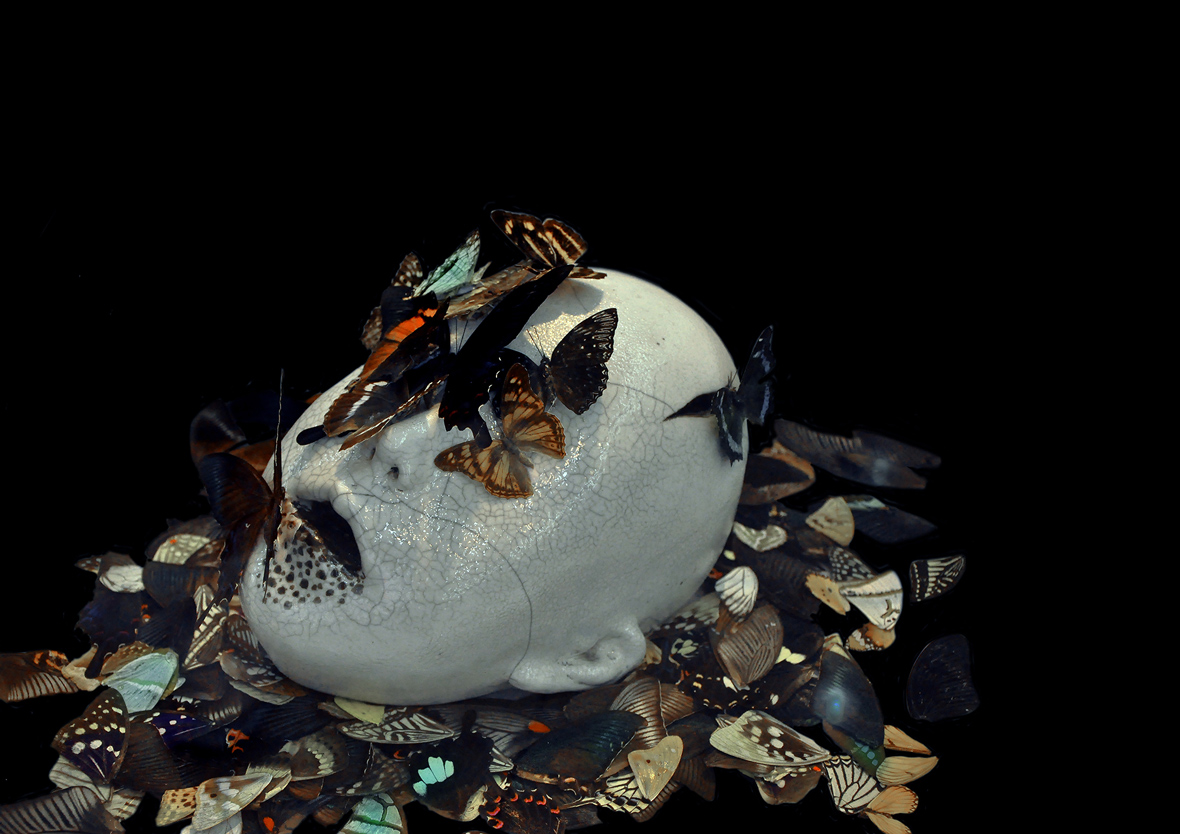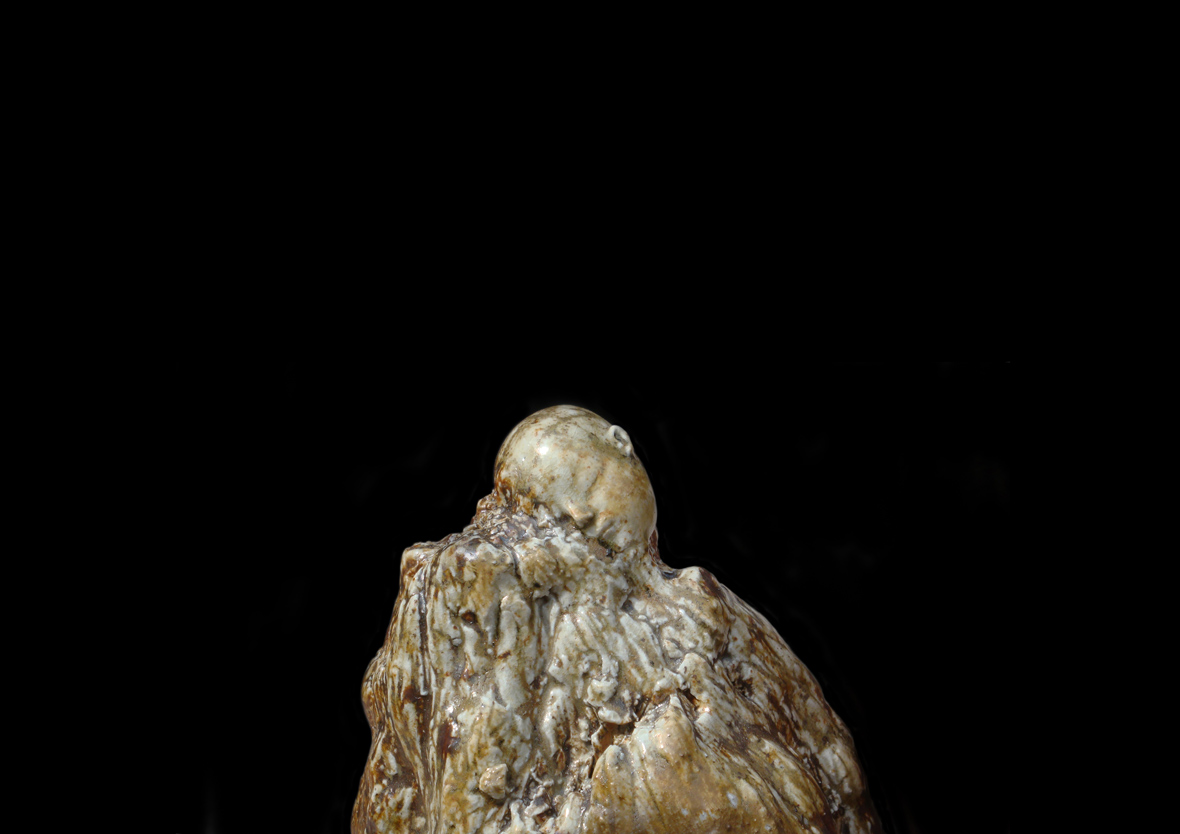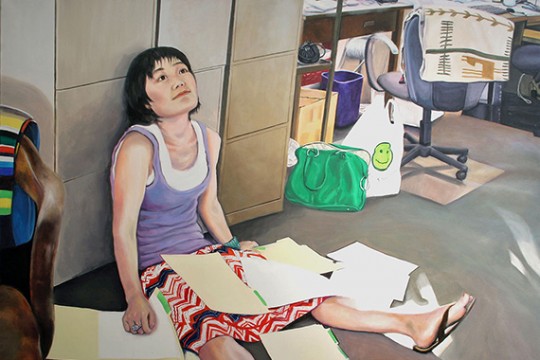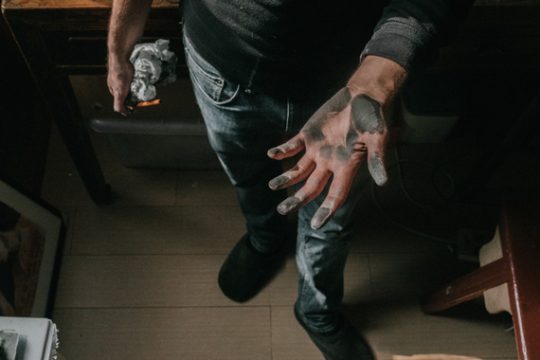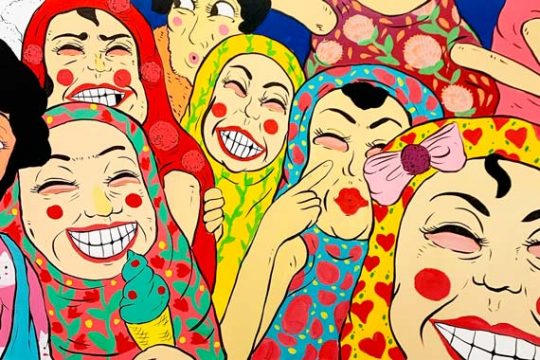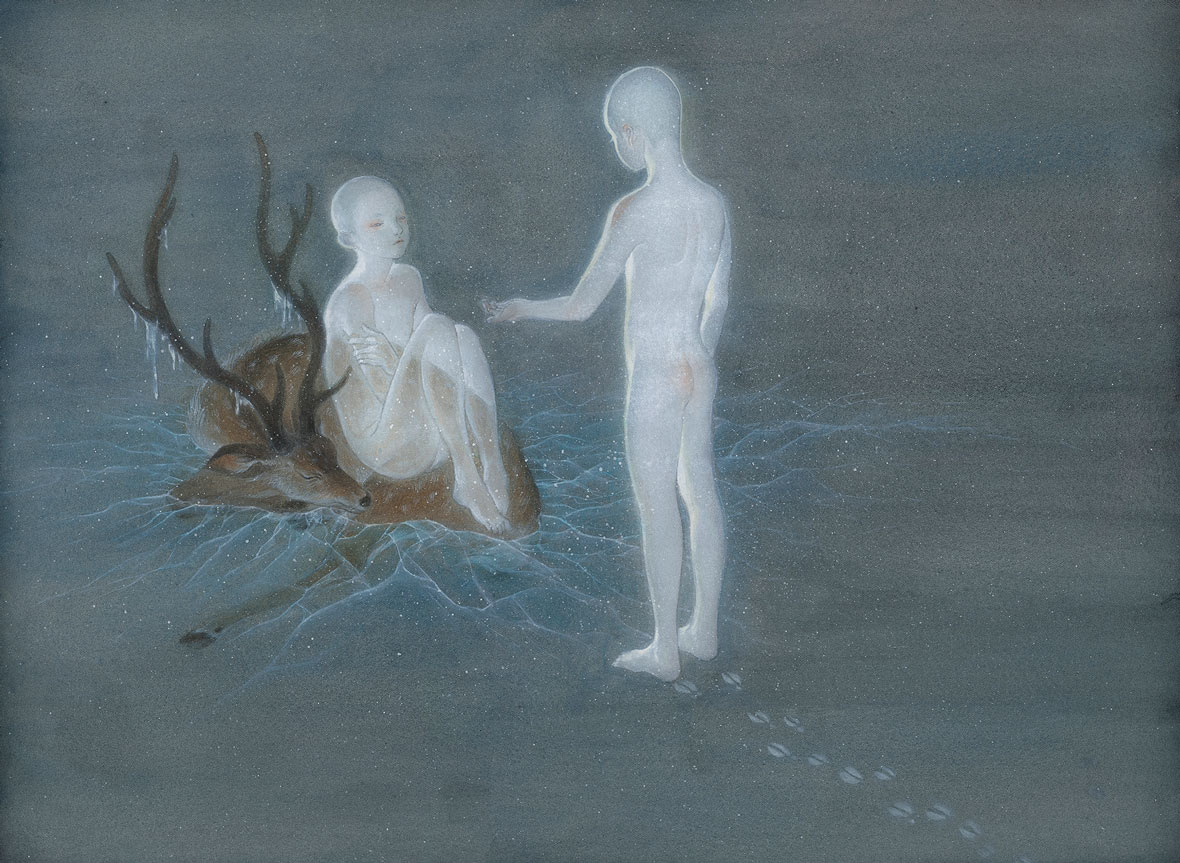
Nowadays, it’s all too common to see a piece of artwork get passed around the internet without any credits attached to the creator. One particular artist who often encounters this issue is sheep, a Chinese illustrator who purposefully stylizes his moniker with a lowercase “s.” But unlike most other artists, sheep doesn’t particularly mind – he’s more concerned with making art than the recognition that follows. His illustrations are peculiar; they’re beautifully illustrated, but the beauty is layered with a sense of melancholy and unease. The characters of sheep’s world are often depicted in their most vulnerable state, but they still remain eager on sharing their untold stories.
有些作品大家都看过却未必清楚知晓作者出处,sheep大概就是这样一个插画师,默默地画着自己的画,默默地做着自己的人形,他的插画不算明媚也没有正能量,却是另一种黑暗又悲伤的细腻美,敏感纤弱的人物都仿佛诉说着关于自己的故事。
On first glance, some of sheep’s work might reveal hints of a Japanese influence behind the aesthetic. He explains, saying that one of his biggest inspirations is Hyakki Yagyo, a Japanese folklore about a night where a hundred different demons roam the streets, but his influences actually come from other sources that extend beyond Japanese culture, such as the fictitious worlds depicted in the Chinese books Classic of Mountains and Seas and In Search of the Supernatural. “When I was still a student, the works of a few Japanese manga artists really resonated with me,” he says. “So in terms of the technique and subjects I experimented with back then, it was influenced by Japanese culture. But for my newer works, I never stop and think if anything feels Japanese or Chinese – I’m simply interested in creating art with an overall Eastern aesthetic, art that transcends the boundaries of time and geography.”
初见sheep的作品,很容易感受到一种日式氛围,但他的作品中的灵感来源也不仅仅来自日本百鬼,还有更多《山海经》和《搜神记》中的志怪传说。“早期学生时代会因为跟日本一些画家的作品产生共鸣感,所以技法和题材上会有意识在所谓的日式审美做尝试。反倒现在我创作的时候,也不会刻意去预设这是日式的,这是中式的概念了,就是整体的、我个人所想表达的东方的东西,无时代性和地域性。”就这个问题他如是说。
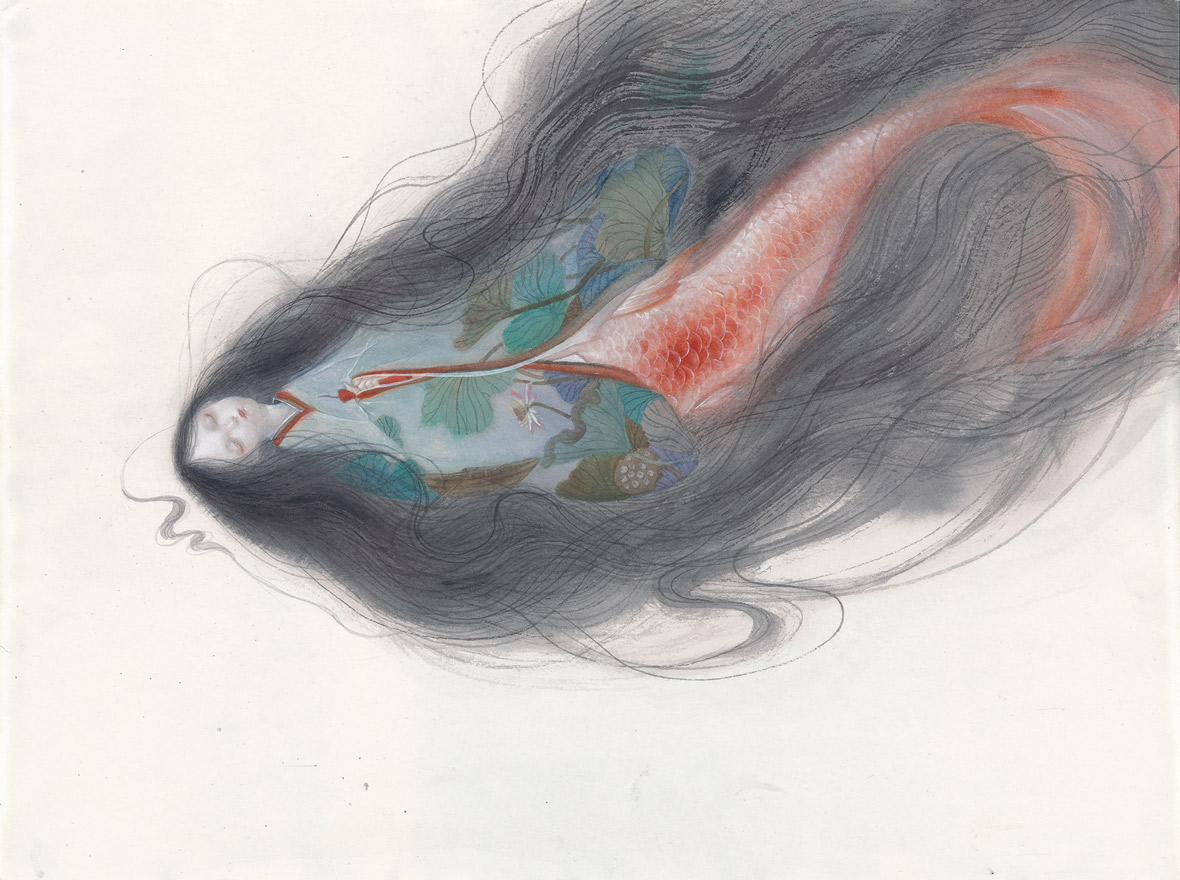
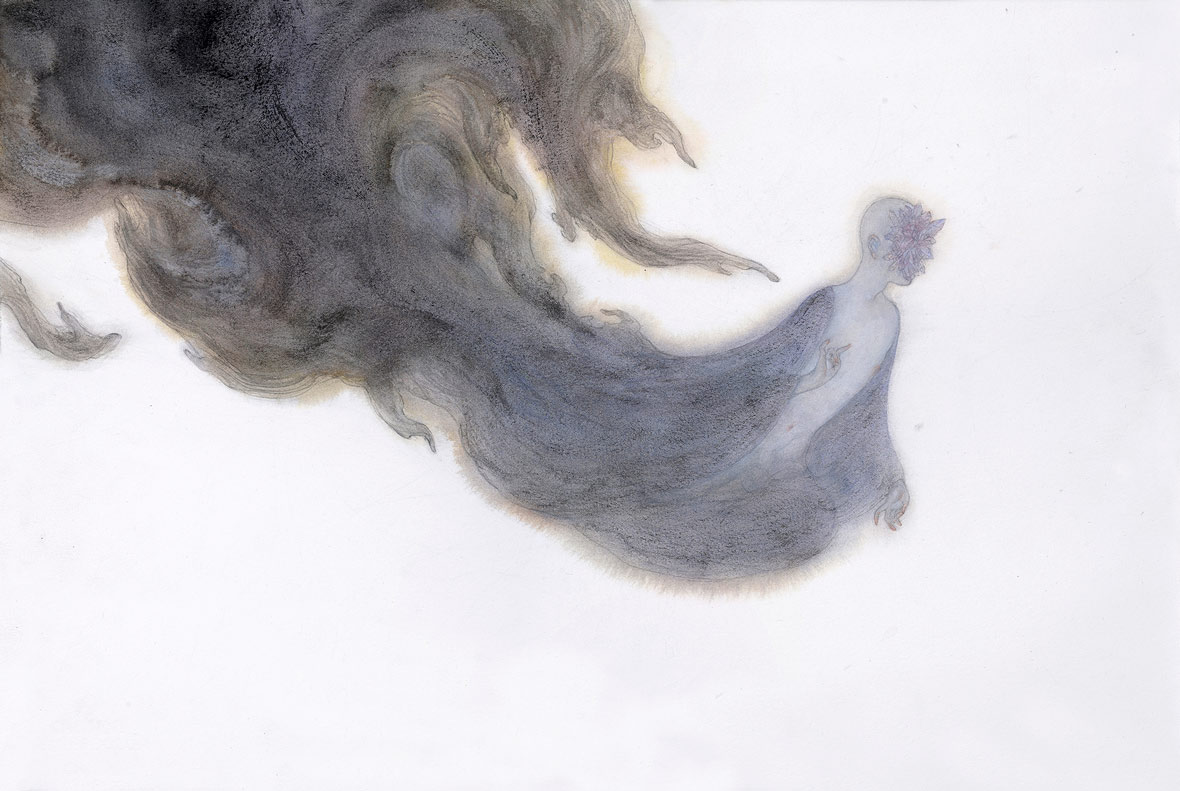
As we discussed his background and initial interest with Japanese culture, sheep shared that one of his favorite fairy tales as a child was Mimei Ogawa’s The Mermaid and the Red Candles. The story is about a baby mermaid that was left at a shrine and discovered by an old couple from a seaside village who never had children of their own. The couple, who ran a candlemaking business, took the mermaid in and raised her. As the mermaid grew up, she helped the family business by drawing pictures of the ocean on the candles. Soon, these drawing made their candles quite famous in the area. Rumors about good luck blessing those who bought and lit her candles at the nearby shrine began to spread, leading to more people buying the candles. Hearing these rumors, a businessman convinced the couple that mermaids were bad luck and bought the mermaid from them. After, he locked in the mermaid in a cage and quickly left with her on a ship. On the same night, a violent storm sunk the ship. From that point on, the couple’s candles became a symbol of bad luck. All of the fishermen who bought the candles in the past all suffered an ill fate. Their candle business soon ended. Not many years later, the city became deserted, eventually turning to ruins. Legend has it now, fishermen passing by the ruins of the town would sometimes see a faintly glowing red candlelight drifting around the shrine.
说到这里,我们又跟他聊了聊他最初对日本文化的了解,sheep跟我们分享了一个他小时候看的童话故事-小川未明的《红蜡烛与人鱼》:大概内容是说一条向往人类世界的人鱼,将自己刚出生的女儿送往了海边的神社。小人鱼被海边渔村一对没有儿女的老夫妇遇见收养。老夫妇靠卖蜡烛为生,人鱼姑娘长大后对大海充满憧憬,开始在蜡烛上画画,使老夫妇的红蜡烛名声远扬,成为出海人祈福的象征,神社香火也旺了起来。有一江湖商人闻此消息,欲重金买走人鱼姑娘,说人鱼是不祥之物。老夫妇迷失心窍,点头同意。商人把人鱼姑娘关在笼中,装运到海上。结果当晚雷雨暴风,巨浪滔天,货船沉没。从此,老夫妇的蜡烛成为灾祸之物,买过的渔民出海无一幸免,生意也再做不下去了。没过几年,山脚下那座小镇就成了一片废墟,不存在了。之后偶尔会有出海的人看到海上隐约的烛光一直飘到废墟神社前。
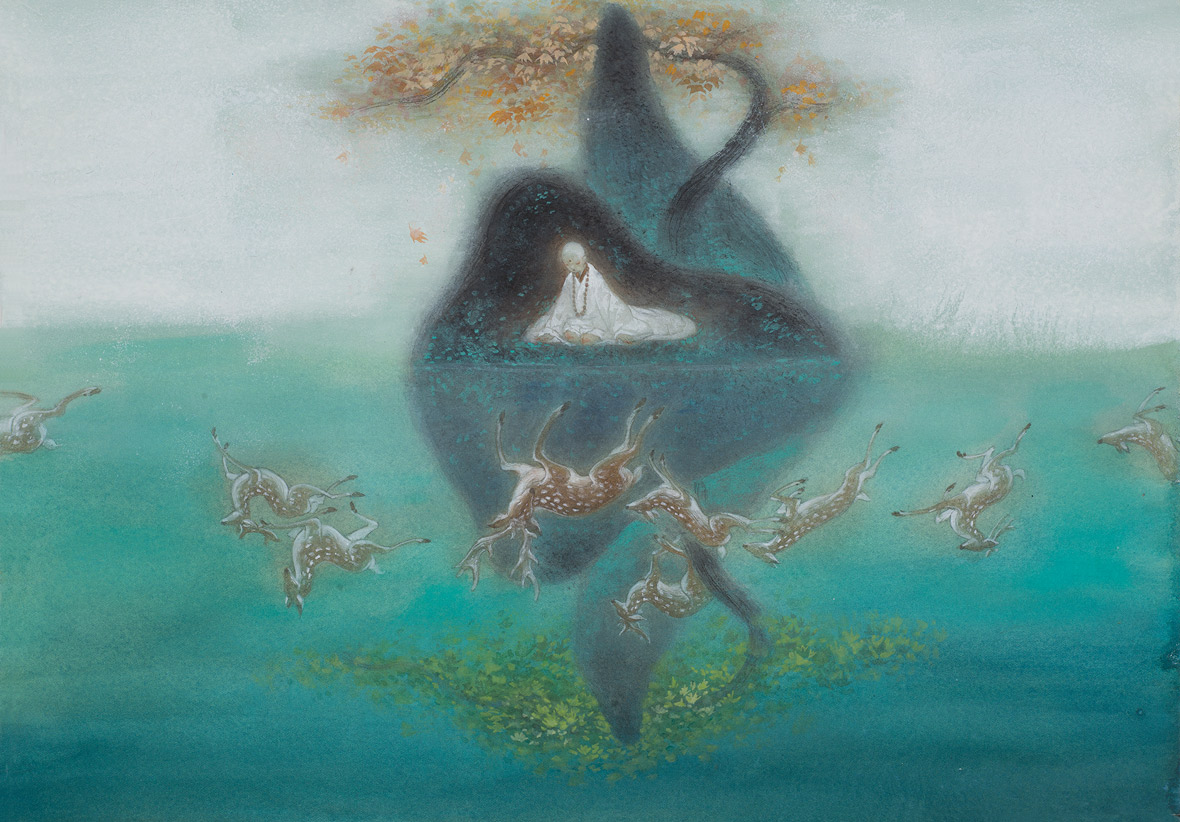
The Mermaid and the Red Candles doesn’t have a happy ending or a sense closure. There’s no repentance or redemption, but it does leave plenty of room for personal interpretations. And in a way, it’s similar to sheep’s artwork now, which all have concisely constructed narratives that still leave much to the imagination of viewers. In Narcissus, sheep’s latest compilation book of his recent works, he even features an illustration based on Ogawa’s story.
这个故事没有一般令人欣慰的圆满结尾,也没有十分需要令人悔改的警醒,但最后的一抹烛光却格外引人遐思,大概这也就像sheep现在的插画一样,说一个点到为止的故事,他的作品集《水仙》中也以绘本的形式诠释了这个故事。

Despite sheep’s impressive illustrative works, his interests and skills have gone beyond illustration alone. He originally comes from a background in ceramic design and has always been infatuated with sculpting. Eager to break the constraint of mediums, he began learning how to make sculptures and figurines by himself. His White Deer sculpture is even based off an earlier illustration of his. As part of the project, he also enlisted the help of photographer Ko Rou, to stage and set up a variety of scenes with the completed figurine.
陶瓷专业出身的sheep对人形和雕塑都很有兴趣,因为不想局限于平面创作,他也制作了自己的人形,靠他自己一点点耐心的自学,白鹿童子也从的画作里活化而出,他还与摄影师扣桑合作,完成了这组人形照片。
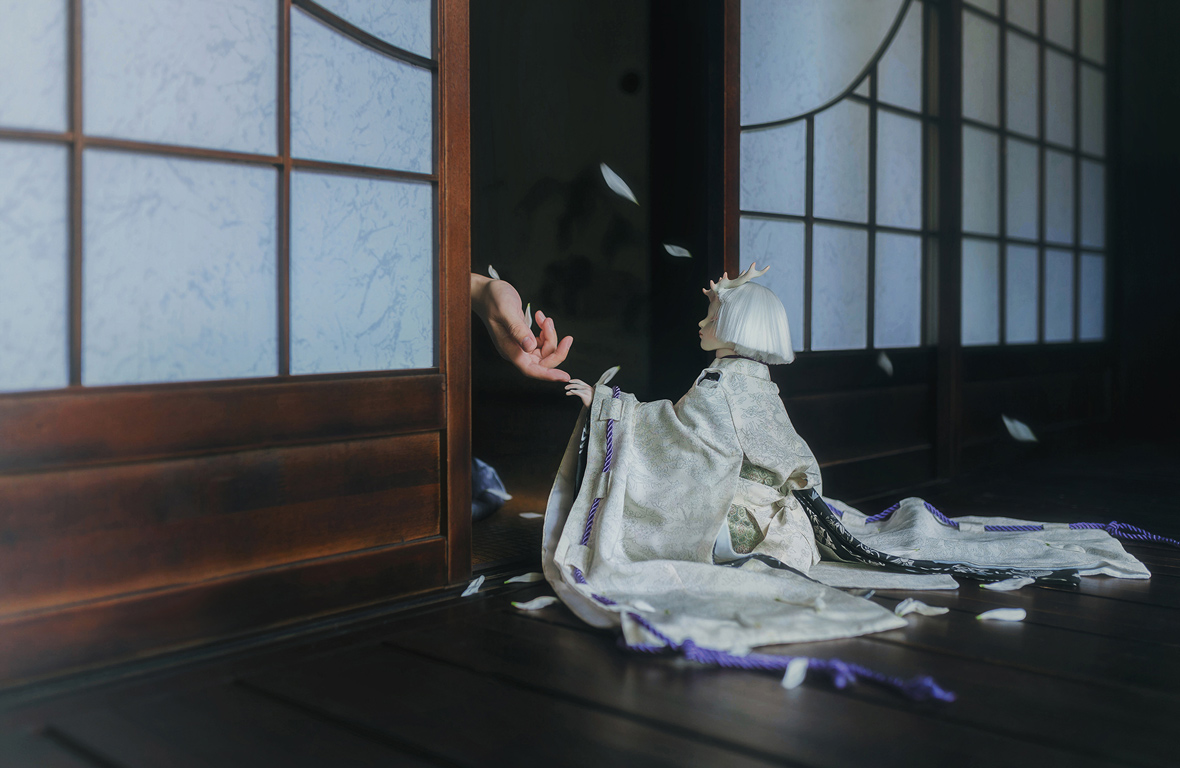
As our discussion meandered and we began chatting about the movie Ghost in the Shell 2: Innocence, sheep comments that he believes art often conveys messages that surpass the original intent of the work. “Creation is like eating. It’s to satisfy an appetite. Completing an idea gives you an unparalleled sense of gratification. When I’m creating, I don’t immediately define what concepts or ideas I want to convey through it. When other people view my work, they might be looking at an authentic piece of my soul, but to them, it could be completely meaningless.”
跟sheep聊到押井守的《无罪》,他觉得作品也会像这样传达一些超越内容本身的东西,“其实很多创作就跟本能吃饭等一样,是一种类似快感的欲望,完成脑中所想的这件事会带来不可替代的幸福感,所以我不会特别预设自己是要传达什么意义或者想法,其他人看到作品就是当时我所脱壳出的一部分我,反而他们其实某种层面来说是没有意义的。”
